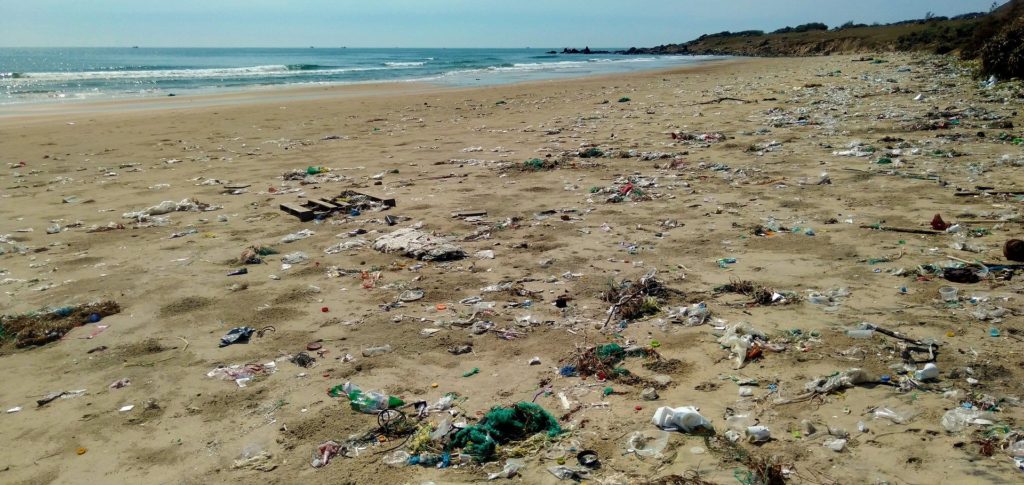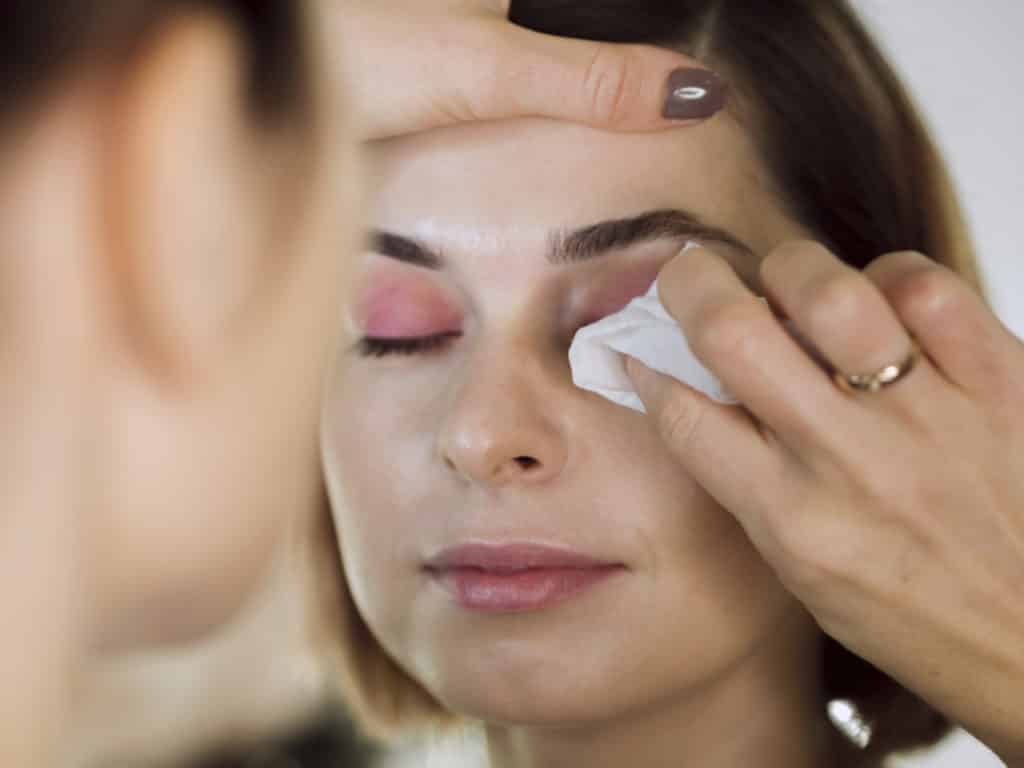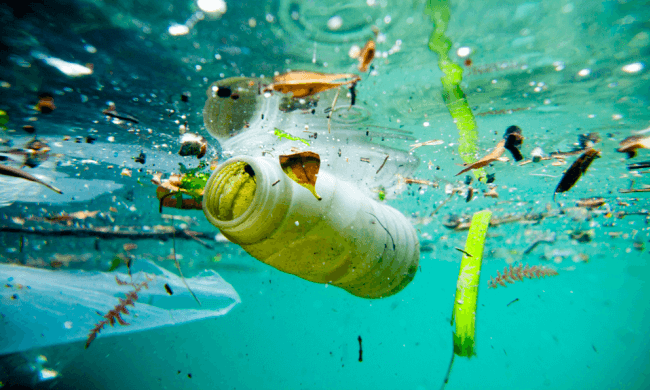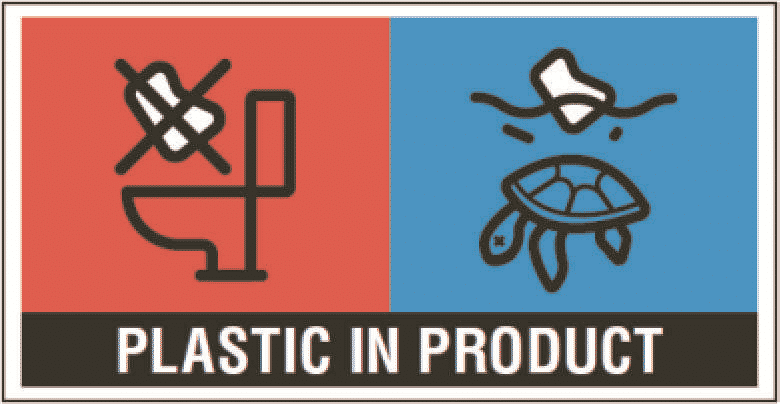New Mandatory Marking Requirements for Wet Wipes at the Horizon

The effects plastic pollution has on natural habitats are familiar to everyone, just think of the Pacific trash vortex – literally a plastic island – or the tiny pieces of plastic scattered all over the sand. In light of this global emergency, Europe is finally moving towards making much-needed changes by putting Directive (EU) 2019/904 into effect.
The goal of this Directive – also known as Single-Use Plastic (SUP) Directive – is to reduce plastic waste and its devasting effects on the environment and human safety, while promoting a shift towards an innovative, sustainable and circular economy.
As per art. 2, the Directive applies to single-use plastic products, to products made from oxo-degradable plastic and to fishing equipment containing plastic. To what extent, then, will this provision exert its effects on cosmetics products?
What is a Single-Use Plastic Product?

First, it is important to outline what is a single-use plastic product. Art. 3(2), defines it as:
“a product that is made wholly or partly from plastic and that is not conceived, designed or placed on the market to accomplish, within its life span, multiple trips or rotations by being returned to a producer for refill or re-used for the same purpose for which it was conceived.” In this regard, single-use plastic products are designed to be used once or for a very short period, after which they can be disposed of. Some examples of this are already well-known, such as the “infamous” cotton bud sticks and straws but it also extends to plastic cutlery, plates, food containers, and even wet wipes.
Which wet wipes will be covered by the Directive?
As reported within the Directive, wet wipes are pre-wetted personal care items, but face masks could also be included in this category. Any personal care product that is designed to be used once, that contains plastic and that is pre-wetted falls under the scope of this Directive.
Clarification on concerned categories will be made through various examples by the upcoming Commission Guidelines on the SUP Directive (art.12 of the Directive).
The Main Effect of Directive EU No 2019/904 on Wet Wipes: Marking Requirements
Wet wipes are affected by three different articles of the Directive, of which the most meaningful for its future out-turn on cosmetic products is article 7, which enunciates:

Member States shall ensure that each single-use plastic product listed in Part D of the Annex placed on the market bears a conspicuous, clearly legible, and indelible marking on its packaging or on the product itself informing consumers of the following:
(a) appropriate waste management options for the product or waste disposal means to be avoided for that product, in line with the waste hierarchy; and
(b) the presence of plastics in the product and the resulting negative impact of littering or other inappropriate means of waste disposal of the product on the environment.
The marking shall not be required for packaging with a surface area of less than 10 cm2.
Thus, it can be easily understood that the main consequence of this Directive will be on marking and labeling requirements that shall report the presence of plastic and how to deal with the proper disposal of the products while also highlighting the detrimental effect if the material isn’t disposed of correctly.
How to Display this Marking? Harmonized Rules Set Out by Commission Regulation (EU) No 2020/2151
On this subject, the new Commission Implementing Regulation (EU) 2020/2151 of 17 December 2020 is giving details on harmonized marking specifications – like position, size and design – to be used on single-use plastic products listed in part D of the Annex to Directive (EU) 2019/904, including wet wipes.
This Regulation, that is directly applicable in all member states of the European Union, shall apply from 3 July 2021. However, a derogation is foreseen: the marking of packaging of wet wipes placed on the market before 4 July 2022 may be affixed by means of stickers.
The printed marking to be displayed on packaging of wet wipes is the following:

The information text of the marking shall be written in the official language or languages of the Member State(s) where the single-use plastic product is placed on the market.
All specifications like position, size and colors of this marking, are reported into Annex I to this article.
Other Effects of the Directive

The other two articles to consider are art.8(3) and art.10. These are interconnected and their effect will be directly on the producers of wipes, as well other products. Member States will also ensure that producers of this type of single-use plastic products shall cover different type of costs:
- awareness-raising measures (referred to in art. 10);
- cleaning up, transport, and treatment of litter;
- data gathering and reporting in accordance with point (c) of Article 8a(1) of Directive EC No 2008/98
These measures are known as Extended Producer Responsibility.
Art. 5 might also have an impact on cosmetic products. It states that for certain single-use plastic products (note: wipes are not covered by this article) Member States shall ban their placing on the market; moreover, there is a general category of products made of oxo-degradable plastic that are banned. If products are made of oxo-degradable plastic, they shall be avoided in the future since this article applies.
For clarity, from the Directive the definition of oxo-degradable plastic means:
“plastic materials that include additives which, through oxidation, lead to the fragmentation of the plastic material into micro-fragments or to chemical decomposition.” However, this should have little to no repercussion on cosmetic companies, since products made of oxo-degradable plastic are mostly shopping bags, plastic wrap, or other types of packaging.
Conclusion
Consequently, BIORIUS warns that cosmetic brands will be affected by Directive (EU) 2019/904:
- if they sell single-use plastic products like wet wipes, for which some marking and labeling requirements apply and are set out in Commission Implementing Regulation (EU) 2020/2151. This marking shall be displayed starting from 3 July 2021;
- or if they sell single-use products made of oxo-degradable plastic which will be banned.
Annex I: Harmonized Marking Specifications for Wet Wipes
Here is reported the full text of Annex II from Commission Regulation 2020/2151, published on the Official Journal of the European Union, covering the rules and specification for marking of wet wipes:
1 – Packaging of wet wipes (i.e. pre-wetted personal care and domestic wipes), with the surface area of 10 cm2 or more, shall bear the following printed marking:

Note: the black line bordering the marking is not part thereof. Its only purpose is to show the thin white line bordering the marking against the white page.
By way of derogation from the first sentence of this point, the marking of packaging of wet wipes placed on the market before 4 July 2022 may be affixed by means of stickers.
2 – The marking shall comply with the requirements laid down in this point.
(a) Position of the marking
The marking shall be placed horizontally on the external front or top surface, whichever is more clearly visible, of the packaging.
Where the marking of the minimum size cannot fit in its entirety on the external front or top surface of the packaging, it may be placed partly on two sides of the packaging, i.e. top and front, or front and side, whichever is more clearly visible.
Where it is not possible to place the marking horizontally due to the shape or size of the packaging, it may be rotated 90° and placed vertically.
The boxes of the marking shall not be separated.
When opening the packaging in accordance with any instructions, the marking should not be torn or made illegible.
(b) Size of the marking
The marking shall be composed of two equal-sized red and blue boxes, which are placed next to each other, and a rectangular black box containing the information text ‘PLASTIC IN PRODUCT’ placed below the two equal-sized boxes. The ratio between the height and length of the marking shall be 1:2.
Where the area of the external front or top surface of the packaging on which the marking is placed is less than 65 cm2, the minimum size of the marking shall be 1,4 cm by 2,8 cm (3,92 cm2). In all other cases, the marking shall cover at least 6 % of the surface area on which it is placed. The maximum required size of the marking shall be 3 cm by 6 cm (18 cm2).
(c) Design of the marking
The design of the marking shall be reproduced without adding any effects, adjusting the colours, retouching or extending the background. The marking shall be reproduced at a minimum resolution of 300 dots per inch when printed in actual size. The marking shall be bordered by a thin white line.
The information text ‘PLASTIC IN PRODUCT’ shall be in upper case and in Helvetica Bold font. The font size shall be a minimum of 5 pt and a maximum of 14 pt.
Where the information text is translated into another or several official languages of the Member States, the translated information text shall be placed either close below the marking, or inside the rectangular black box below the first language, and shall be in both cases clearly visible. In exceptional cases due to spatial constraints on the external front or top surface of the packaging, the information text translated into another or several official languages of the Member States may be placed elsewhere on the packaging as close as possible to the marking and where it is clearly visible. The translated information text shall be in upper case and in Helvetica Bold font. The font size shall be a minimum of 5 pt and a maximum of 14 pt. Where the information text in additional languages is placed in the rectangular black box, derogations from the maximum required size of the marking are possible. The colours having the following colour codes shall be used: — White: C = 0 / M = 0 / Y = 0 / K = 0 — Black: C = 0 / M = 0 / Y = 0 / K = 100 — Red: C = 0 / M = 90 / Y = 60 / K = 0 — Blue: C = 60 / M = 0 / Y = 0 / K = 0.
Annex II: National Specificities Covering Wipes
- France: following the publication of the Directive, a group of cosmetic and personal care associations in France has issued a recommendation of good practices to harmonize the wet wipes labelling. For instance, it is recommended to not put wipes on the market claiming that they can be thrown in the toilet, because by its nature, only toilet paper can be thrown into the toilet; it is advisable to affix on the packaging the pictogram of “do not dispose of in the toilet”. The term biodegradable can be used only if wipes have specific characteristics: a decomposition degree which is assessed in respect of the time required for the degradation; wipes should be compliant with the standard EN 13432 (2000) or equivalent tests: OECD tests: Easy biodegradability 301 A, DOC removal test; 301 B, CO2 evolution test; 301 F, Manometric Respirometry.
- UK: CTPA, the Cosmetic Toiletry and Perfumery Association, has issued a guidance for environmental claims, including wipes. The claim “flushable” can be used only for wipes specially designed for this purpose; in all other cases it should be avoided, and wipes must be thrown away properly. This information should be made clear to consumers.
Annex III: Some Additional Notes
- Where the Directive conflicts with Directive 94/62/EC (Packaging and Packaging Waste Directive) or 2008/98/EC (EU Waste Framework Directive), the single-use plastic Directive shall prevail.
- As mentioned before, examples of categories of wet wipes covered by the Directive (EU) 2019/904 will be given by the forthcoming Commission Guidelines, with guidance on whether to include or exclude certain products from the scope of the SUP Directive. Face masks, make-up wipes are expected to fall under this Directive.
- Since the actual definition of “plastic” reported into the Directive does not give specific boundaries and it could also cover materials like viscose and lyocell, clarifications are expected also on this point via Guidelines from the European Commission.
References
Clarification of plastics definition for the uptake of cellulose fibres in Europe’s bioeconomy. Joint Document of AISE, CEPI, CIRFS, EDANA, EURATEX, April 2020.
Commission Implementing Regulation (EU) 2020/2151 of 17 December 2020 laying down rules on harmonised marking specifications on single-use plastic products listed in Part D of the Annex to Directive (EU) 2019/904 of the European Parliament and of the Council on the reduction of the impact of certain plastic products on the environment.
CTPA Environmental & Green Claims, July 2020.
Directive (EU) 2019/904 of the European Parliament and of the Council of 5 June 2019 on the reduction of the impact of certain plastic products on the environment.
Lingettes Imprégnées – Recommandation de Bonnes Pratiques – Joint Document of AFISE, COSMED, FCD, FEBEA, FMB, June 2019.


